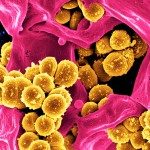Link to Pubmed [PMID] – 24421388
Mol. Cell. Biol. 2014 Mar;34(6):1066-76
The COP9 signalosome (CSN) is an evolutionarily conserved protein complex that participates in the regulation of the ubiquitin/26S proteasome pathway by controlling the function of cullin-RING-ubiquitin ligases. Impressive progress has been made in deciphering its critical role in diverse cellular and developmental processes. However, little is known about the underlying regulatory principles that coordinate its function. Through biochemical and fluorescence microscopy analyses, we determined that the complex is localized in the cytoplasm, nucleoplasm, and chromatin-bound fractions, each differing in the composition of posttranslationally modified subunits, depending on its location within the cell. During the cell cycle, the segregation between subcellular localizations remains steady. However, upon UV damage, a dose-dependent temporal shuttling of the CSN complex into the nucleus was seen, accompanied by upregulation of specific phosphorylations within CSN1, CSN3, and CSN8. Taken together, our results suggest that the specific spatiotemporal composition of the CSN is highly controlled, enabling the complex to rapidly adapt and respond to DNA damage.
